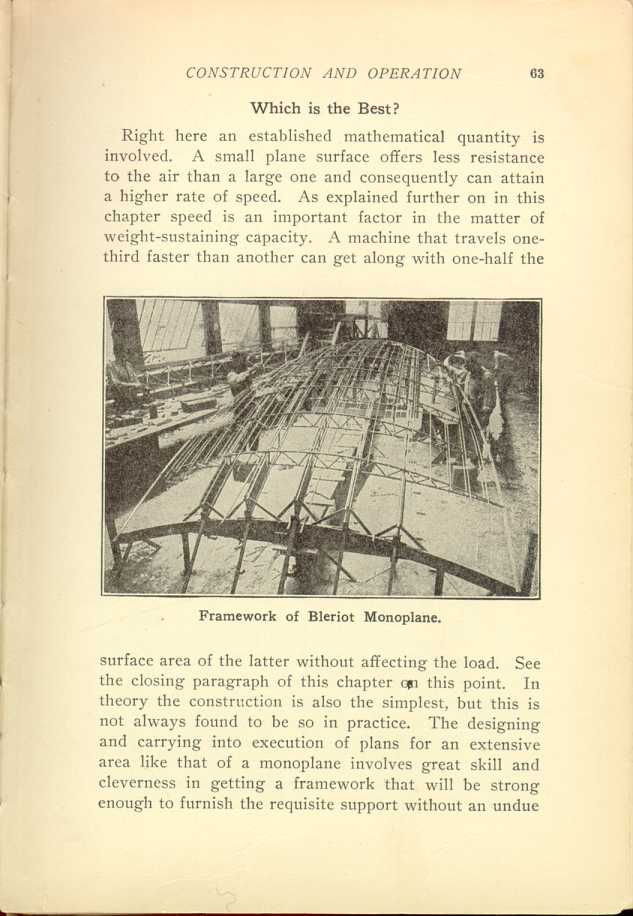Which is the Best?
Right here an established mathematical quantity is involved. A small
plane surface offers less resistance to the air than a large one and
consequently can attain a higher rate of speed. As explained further on
in this chapter speed is an important factor in the matter of
weight-sustaining capacity. A machine that travels one-third faster than
another can get along with one-half the
surface area of the latter without affecting the load. See the closing
paragraph of this chapter on this point. In theory the construction is
also the simplest, but this is not always found to be so in practice.
The designing and carrying into execution of plans for an extensive area
like that of a monoplane involves great skill and cleverness in getting
a framework that will be strong enough to furnish the requisite support
without an undue
excess of weight. This proposition is greatly simplified in the biplane
and, while the speed attained by the latter may not be quite so great as
that of the monoplane, it has much larger weight-carrying capacity.
